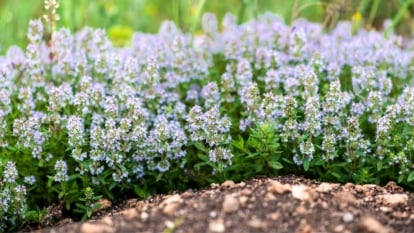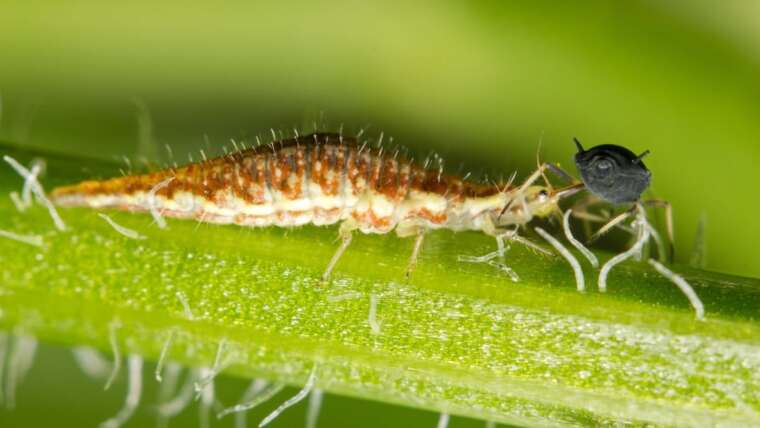When you hear “wild ginger,” you may first think of the fragrant culinary ginger, a familiar kitchen spice. The ginger we commonly use for cooking comes from the rhizomes of Zingiber officinale, native to tropical and subtropical Asia. Wild ginger is a completely different plant.
Also known as Asarum canadense, this is a low-growing plant native to central and eastern North America. It is in the birthwort family, Aristolochiaceae, which contains over 400 species of plants. The genus Asarum contains 60 to 70 species, although the exact number is disputed, including several plants commonly known as “wild ginger.”
This native typically grows only 6 to 8 inches tall and makes a good ground cover. It grows from thick rhizomes that creep along just under the soil surface. Each rhizome produces small clusters of stems, each topped with a single heart-shaped leaf. These plants bloom in the spring, but most people never see the flowers. The flowers are brownish and cup-like, growing from a short stem at ground level. During the early spring months, you would have to peer under the leaves at the base of the plants to see these fascinating little flowers.
If you are looking for a great plant for your woodland garden, shade garden, or even a shaded rock garden, wild ginger would be an excellent choice. It forms dense colonies and thrives in woodland habitats with partial to full shade. It prefers moist soils and can tolerate periodically wet soils as well.
Wild ginger is beautiful, hardy, and easy to grow. Let’s dig into this plant’s fascinating attributes and how to grow it in your garden.
Wild Ginger Plant Overview
|
| |
Plant History
 These low-growing leafy plants make excellent ground covers.
These low-growing leafy plants make excellent ground covers.
Wild ginger (Asarum canadense) is one of approximately 70 species of flowering perennial plants within the genus Asarum. Various species of Asarum plants can be found worldwide, including a few species native to the United States and Canada. It is recognized for its attractive foliage and unique flowers that grow at the base of the plant.
These are low-growing leafy plants that make excellent ground covers. They prefer shaded habitats, although some varieties are more tolerant of bright sunlight than others. If you have a shade garden, consider adding this native for beautiful foliage as a stand-alone cluster or massed with other shade-loving plants.
Asarum canadense is unrelated to the familiar culinary ginger, the latter of which is a tropical plant native to Asia. These two plants are distinct species and in different families; culinary ginger is Zingiber officinale. Still, Asarum canadense has a fragrant root and thickened rhizomes with some resemblance to culinary ginger. The leaves and flowers of these two plants are also distinctly different.
As this plant has gained popularity among home gardeners, several cultivars have been created. If you want to grow it in your garden, you will most likely encounter a few popular cultivars or one of the hardier and better-known wild relatives. A good example of one of these relatives is Asarum europaeum, the European wild ginger. You can sometimes find North American native ginger plants at nurseries specializing in native species.
Cultivation
 Growing this low-maintenance plant requires minimal effort.
Growing this low-maintenance plant requires minimal effort.
Wild ginger is very easy to grow and low maintenance. It can be started from seed or by dividing mature clusters. Once you have an established plant, it will readily naturalize in ideal conditions, and you will have vegetation to enjoy year after year.
Wild ginger thrives in the shade. If you have a shade garden or a wooded yard, you probably already know how difficult it can be to find plants to grow in the shade. Fortunately, these plants love the shade and are even tolerant of heavy shade. They are not bothered by many pests or diseases, and they tolerate a wide variety of climates.
Most people don’t grow this plant for the flowers. Most people never even see the flowers. In the spring, just after the leaves have fully unfurled and you are enjoying the lush green mass of leafy vegetation, move aside some leaves and look down towards the base of the plant.
This is where you will find the flowers. The flowers have three petals and deep jug-like or cup-like bases. They bloom at ground level, and the flowers are quite interesting if you take the time to find them.
Propagation
If you already have access to a native ginger plant, propagation is extremely easy. All you need is one plant to get you started. Once it settles into its new home, it will start to spread by creeping rhizomes, and it is very simple to divide larger clusters. Do not dig plants from the wild, but you can share your clusters freely with your gardening friends.
Seed
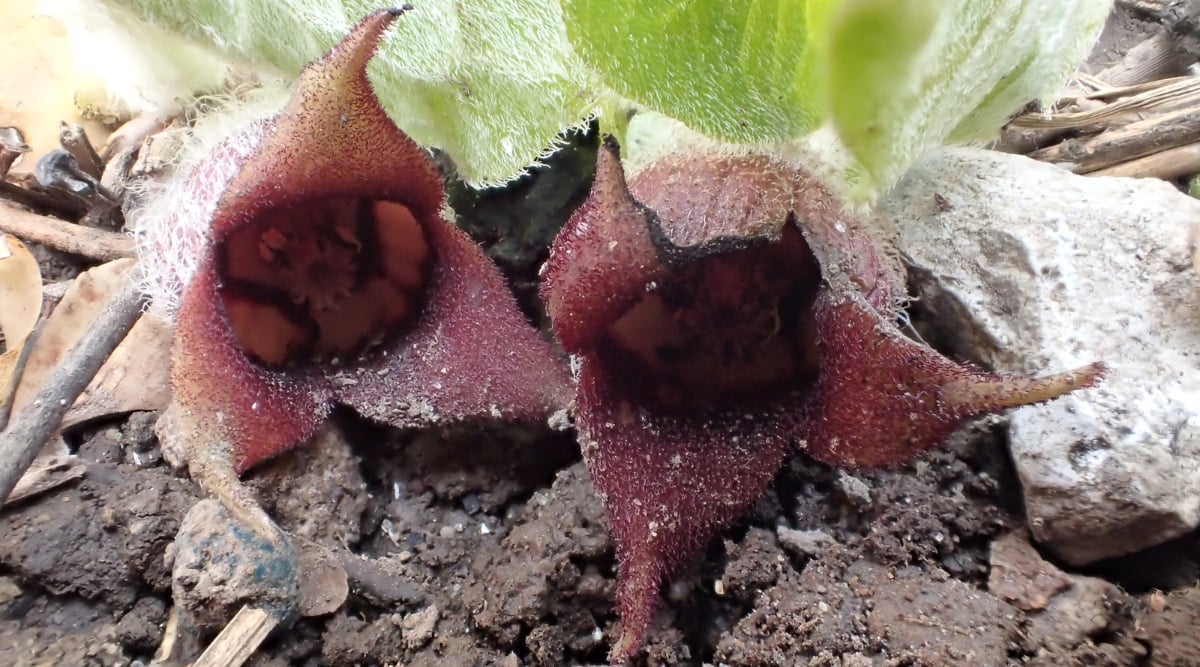 After the flowers turn brown, you can collect seeds to grow more plants.
After the flowers turn brown, you can collect seeds to grow more plants.
Wild ginger can be grown from seed, and you can collect seeds from the mature flowers after they turn brown. The seeds require cold stratification before they will germinate.
Seeds from the Asarum genus require a minimum of 3 weeks of freezing temperatures to stimulate sprouting. The adventurous gardener can plant them outdoors in the fall and let nature take its course, or you can simulate winter by placing seeds in your freezer.
Direct Sow Outdoors
If you want to start seeds outside, sow them in moist soil in late fall:
- Sow the seeds by gently pressing them into the soil surface.
- Cover them with a dusting of fresh soil, no more than ¼ to ½ inch deep.
- Do not bury the seeds, or they won’t sprout.
- You should not have to do much during the winter; allow them to go through the natural winter process.
Allowing seeds to germinate naturally can work very well, but you also don’t have much control over the local environmental conditions
Start Indoors
If you want to start seeds indoors, you will have more control but also a bit more work.
- First, place some seeds in a small amount of moist soil or vermiculite.
- Seal these in an airtight bag or container.
- Place them in the freezer for at least 3 weeks to simulate a winter phase.
- After this cold stratification, place the seeds in seed-starting pots or trays.
- Plant them no more than ¼ inch deep.
- Place the pots in a location at room temperature.
- Keep the soil moist until the seeds sprout, which may require several weeks.
Whether you planted your seeds inside or outside, they should germinate in the spring, and you will see tiny new wild ginger plants. They may not look like much for the first year, but they will be developing larger roots and sturdy rhizomes to grow even larger in the following years.
Seedlings
 Young seedlings are low-maintenance, as they only require moist soil and a shaded spot.
Young seedlings are low-maintenance, as they only require moist soil and a shaded spot.
Wild ginger seedlings look like miniature versions of mature plants. The young leaves are heart-shaped, growing on short, delicate stems. Seedlings don’t require any special care. They have fairly basic needs of moist soil and a shaded location.
Outdoor seedlings may be a tempting snack for browning deer and rabbits, so you may want to place a small protective cage around them until they get a little bigger. Indoor seedlings need to be kept moist but not wet until they are large enough to transplant outside. Wait until seedlings are at least several inches tall and have a few true leaves before transplanting them.
Division
 Dividing established clusters will be the simplest method for propagating wild ginger.
Dividing established clusters will be the simplest method for propagating wild ginger.
The easiest way to propagate wild ginger will be by dividing established clusters. The best time of year to divide plants will be early spring or late fall. If you have a colony of wild ginger plants, you will notice several individual clusters of leaves emerging from the ground. At the base of each leaf cluster is a mature rhizome.
The only tools you need for this process are a small garden spade and gardening gloves to protect your hands. You can cut and separate one or several of these rhizomes from the rest of the plant using a garden spade.
Transplant rhizomes directly into a new location for an immediate transfer, or you can pot them for a while before transferring to a new location. When planting, match the depth and give your transplant plenty of water to minimize transplant shock.
Planting
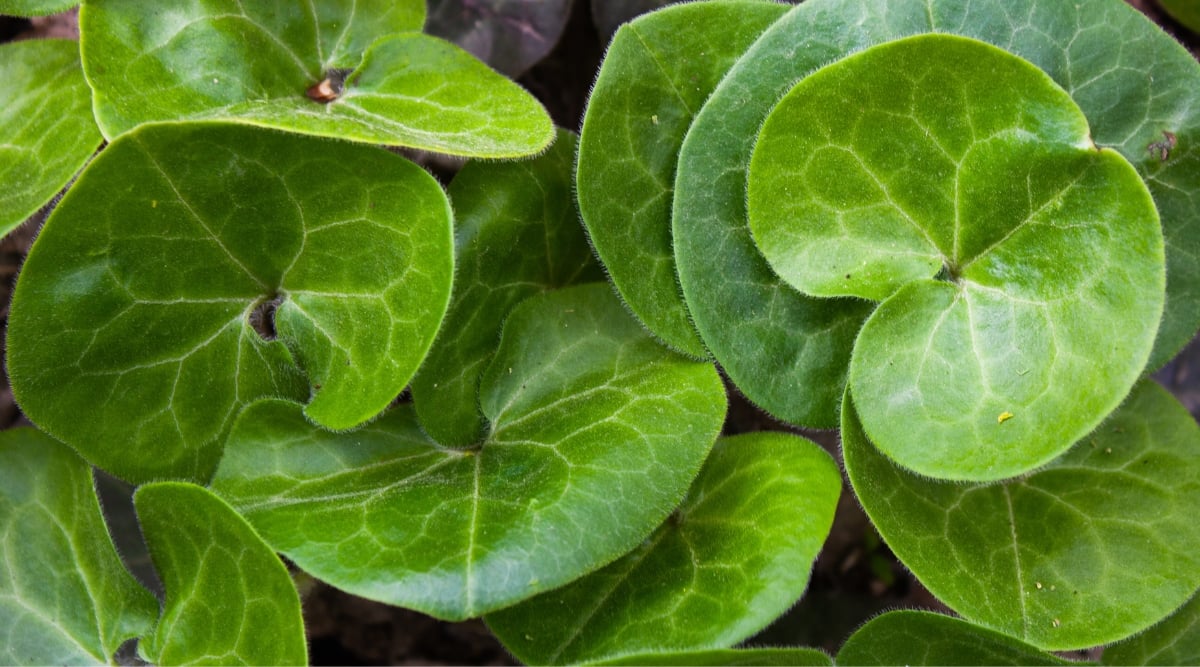 When transplanting, select a shady location with rich, moist soil.
When transplanting, select a shady location with rich, moist soil.
If you bought plants from a nursery or are transplanting your home-grown seedlings, you will need to plant them outside eventually. First, you’ll want to identify the ideal location based on your available shady space with rich, moist soil.
You don’t need to do much soil preparation before transplanting. Use a sturdy hand trowel to loosen up the soil where you want to place your plants and dig a hole large enough for the roots of your transplants.
Place your plants into the hole and replace the soil around the base of the plant. Don’t bury more of the stem than the plant was previously growing. The rhizomes develop very close to the soil surface, so you should not plant them too deep. After planting, give your new transplants a satisfying drink of water to help them get established, then keep an eye on them for the first several weeks to ensure the soil stays moist.
How to Grow
Growing these native plants is a breeze. They even tolerate a fair amount of neglect.
Sunlight
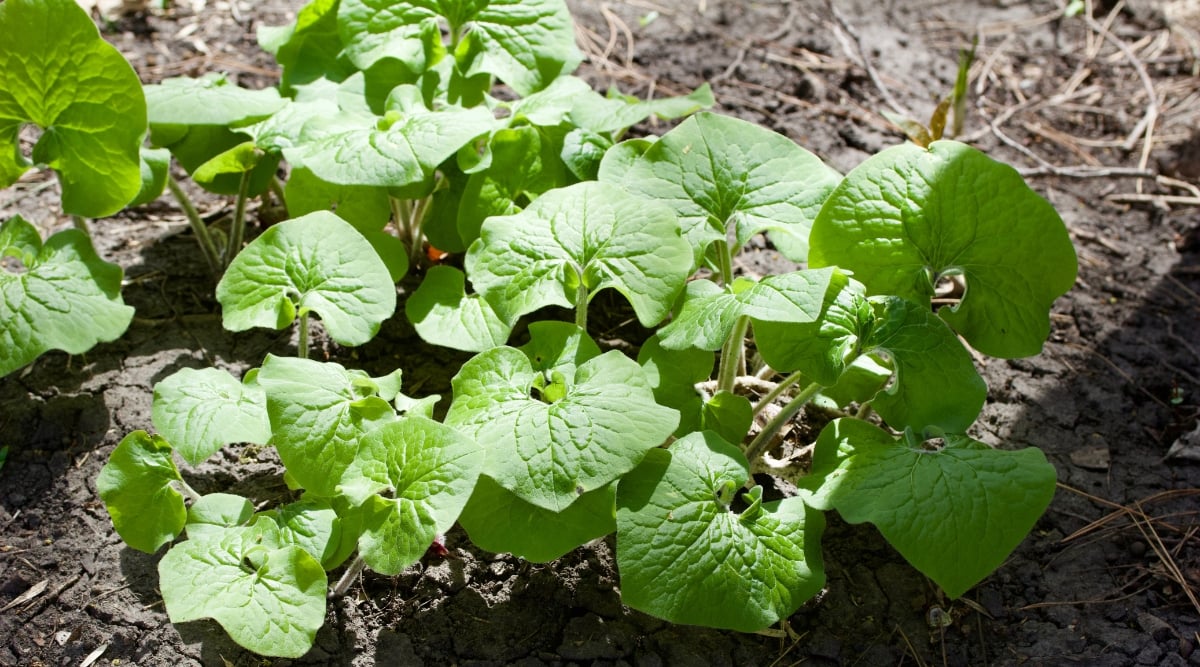 With a preference for shade, this plant thrives even with less than 3 hours of direct sunlight daily.
With a preference for shade, this plant thrives even with less than 3 hours of direct sunlight daily.
Wild ginger loves the shade. Most varieties do well with less than 3 hours of bright sunlight each day. Dappled sunlight or bright, but indirect sunlight is enough for this plant to thrive in most cases.
Water
 Consistently moist soil is ideal for native ginger.
Consistently moist soil is ideal for native ginger.
These plants are somewhat variable in their water preferences. The native A. canadense does best with consistently moist soil, although more mature plants tolerate dry phases.
The heartleaf ginger (A. virginicum) is more tolerant of dry soil, but also does very well with medium-moisture soil. Wild ginger plants are generally not drought tolerant.
Soil
 A soil rich in organic matter provides a thriving environment for this native plant.
A soil rich in organic matter provides a thriving environment for this native plant.
Wild ginger thrives in soils rich in organic matter. The organic matter adds nutrients and helps retain soil moisture which these plants greatly appreciate. It is important that soils are well-drained so plants are never sitting in fully saturated soil.
Climate and Temperature
 This native thrives in temperate climates and also prefers moist environments.
This native thrives in temperate climates and also prefers moist environments.
A. canadense is best grown in temperate climates, encompassing USDA plant hardiness zones 4 through 7. This plant also prefers a more moist environment with regular rainfall and is unsuitable for an arid climate.
Fertilizer
 Generally, native plants thrive without additional fertilizers or chemical aid.
Generally, native plants thrive without additional fertilizers or chemical aid.
Plant this native species in garden soil rich in organic matter, but you will not need to add any extra fertilizer. Native plants are well-adapted to natural conditions and generally do very well without extra fertilizers or chemical assistance.
Maintenance
 Once established, this plant becomes fairly tolerant of temporary drought conditions.
Once established, this plant becomes fairly tolerant of temporary drought conditions.
You will be pleased to know that this plant is very low-maintenance. After planting it and allowing it some time to become established, you will likely not need to do any maintenance other than typical garden maintenance, such as pulling weeds.
During times of drought, you can offer your plants some water. Wild ginger will become quite tolerant of short-term dry conditions once well-established, especially if growing in a well-shaded location. The other optional maintenance is thinning colonies that have overgrown their allotted space. You can do this every few years, as necessary or desired.
Garden Design
 A. canadense is an excellent choice for ground cover due to its low-growing nature and abundant foliage.
A. canadense is an excellent choice for ground cover due to its low-growing nature and abundant foliage.
Finding attractive plants well-suited for a shade garden can sometimes feel challenging. Many beautiful flowering plants and foliage plants can be used in locations with direct sunlight, but what about shaded locations? Fortunately, this is an excellent plant for shaded plots.
Since A. canadense is low-growing and leafy, it makes a great ground cover. Use it around borders and edges, or grow it alongside a wooded path. If you have a small stream or pond, you can plant a cluster of this plant along the edge of your water feature. It does not vine, climb, or drape. It simply forms appealing dense masses of vegetation.
You will want to give your A. canadense a bit of space because these plants will spread to fill in small areas. Don’t grow them immediately next to larger and taller plants because they will try to outcompete each other. Wild ginger looks very nice growing in isolated clusters.
Alternatively, you can incorporate other shade-loving plants, such as ferns and Solomon’s seal, in an attractive shade garden with a beautiful variety of seasonal vegetation.
Other related ginger relatives may be of interest to the home gardener. These wild gingers are at home in a shaded location and can be easy to grow and low-maintenance in the home garden.
Heart-Leaf Ginger, Asarum virginicum
 The leaves of this species are distinctly heart-shaped and variegated green with silvery-green accents.
The leaves of this species are distinctly heart-shaped and variegated green with silvery-green accents.
Heart-leaf ginger is hardy in USDA zones 6 through 9 and is aptly named. The leaves are distinctly heart-shaped and variegated green with silvery-green accents. This plant is native to the southeastern United States, where it grows in upland forests.
The stems and leaves will form small clusters and are not aggressive in cultivation. Pale, juglike flowers bloom at the base of these plants each spring, giving it another common name, little brown jug.
Western Wild Ginger, Asarum caudatum
 The long petals of western wild ginger have a striking deep burgundy-red color, making its flowers highly showy.
The long petals of western wild ginger have a striking deep burgundy-red color, making its flowers highly showy.
Western wild ginger has dark green heart-shaped leaves that stay evergreen in USDA zones 7 through 9. This plant is native to mild climates in western North America.
In the home garden, it is a great ground cover and can cover small areas with a dense layer of low-growing foliage. Take the time to look for the blossoms each spring. The flowers are very showy, with a deep burgundy-red color and dramatically long petals.
European Wild Ginger, Asarum europeaum
 An excellent ground cover, European wild ginger has the ability to grow into dense clusters.
An excellent ground cover, European wild ginger has the ability to grow into dense clusters.
The European wild ginger is native to Europe and hardy in USDA zones 4 to 8. This plant can grow into dense clusters, making an excellent ground cover. The glossy green leaves are thicker and sturdier than the North American species.
Chinese Wild Ginger, Asarum splendens
 This Chinese species retains its green color in warmer regions throughout the winter.
This Chinese species retains its green color in warmer regions throughout the winter.
The Chinese ginger is native to China and hardy in USDA zones 6 through 9. This plant is semi-evergreen, staying green through the winter in warmer parts of its range.
The foliage of this plant is particularly showy. The deep green heart-shaped leaves are boldly highlighted with silvery markings.
Wildlife Value
 Native ginger is challenging for butterflies and bees to reach because the flowers grow under the leaves.
Native ginger is challenging for butterflies and bees to reach because the flowers grow under the leaves.
This plant does offer some wildlife value, although it is not a classic wildlife plant. Because the flowers are inconspicuous and grow at the base of the plants and under the leaves, they are difficult for butterflies and bees to access. Some insects will, however, visit the flowers as pollinators.
Pests and Diseases
Wild ginger plants are generally hardy and trouble-free. They may, however, be eaten by snails and slugs. They are typically disease-free.
Rabbits and Deer
 Occasionally, rabbits and deer may browse on native plant leaves, resulting in minor damage.
Occasionally, rabbits and deer may browse on native plant leaves, resulting in minor damage.
Rabbits and deer are vegetarians and will sample just about any vegetation. They will occasionally browse on the leaves, causing minor damage.
Plants typically re-grow with no lasting negative effects. If you are concerned that your newly planted plant will get eaten by herbivores, you can safely and securely protect it by covering it with a browse-proof critter cage. Once the plant is mature, a few nibbles won’t hurt it.
Snails and Slugs
 These slimy pests can sometimes become problematic as they may eat delicate leaves.
These slimy pests can sometimes become problematic as they may eat delicate leaves.
Snails and slugs can cause occasional problems by eating the tender leaves of groundcover plants. These can be difficult to control, but fortunately, they rarely cause serious damage.
If you notice slugs chewing holes in the leaves, you can hand-pick the pests and physically remove them from your garden area. Using an organic slug and snail bait also is effective.
Frequently Asked Questions
Wild ginger is not an invasive species and populations of this plant are easy to control. In ideal conditions with plenty of shade and rich, moist soil, it will freely spread. Plants will form large colonies, spreading by rhizomes. If your cluster is starting to outgrow its designated space, simply dig and remove extra plants. You can transplant the extras to another shady spot or give them away to other gardeners.
Yes, you can definitely grow wild ginger in containers. If you are using a large pot for container gardening, you will need to be sure to keep the soil moist. A larger container or a sturdy raised bed can be a great way to create a garden space with better control over soil, moisture, and sunlight. Containers and raised beds add versatility that you don’t have with in-ground planting, especially if you are dealing with challenging environmental conditions. Another benefit of container growing is that you may have an easier angle from which to see their interesting flowers.
No, these plants are not the same. Wild ginger is in the plant genus Asarum whereas culinary ginger root is in the genus Zingiber and these two are not related. They are even in different plant families. So why is wild ginger called “ginger” if it isn’t related to the more familiar ginger spice? The rhizomes of these plants look similar and both have a pungent spicy smell. If you want a gingery taste, however, stick with the store-bought culinary ginger for your baking and cooking needs.
Final Thoughts
Jump in if you want to grow this native ground cover in your shade garden! This fabulous plant with attractive foliage stays green from early summer until the first frost. It makes a great ground cover and thrives in shaded woodlands, making it an ideal addition to a shaded landscape that needs a bit of interest.
Remember that a shaded site with moist soil is key to success. Beyond that, this trouble-free plant is sure to please!



